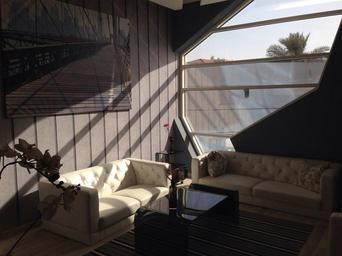Introduction
In the grand tapestry of our lives, our homes serve as the canvas where we paint our stories. Each piece of furniture, every stroke of color, and artwork on the wall contributes to a narrative that reflects who we are and what we cherish. Visual storytelling in design is an art form that transcends mere decoration; it’s about creating spaces that resonate with emotions and memories. This article will explore how you can utilize artistic elements in your home to narrate your journey, inspire self-expression through decor, and create inviting spaces.
Visual Storytelling in Design: How to Use Art to Narrate Your Home’s Journey
Art has an unparalleled ability to evoke feelings and transport us to different times and places. By using art as a storytelling medium within your home, you not only beautify your surroundings but also establish a personal sanctuary that mirrors your life’s journey. The goal is not just aesthetics but emotional resonance—making spaces feel alive and reflective of personal narratives.
Understanding Visual Storytelling
What is Visual Storytelling?
Visual storytelling combines imagery with narrative elements to convey messages or ideas. It can be as simple as photographs adorning your walls or as complex as a carefully curated collection of art pieces that depict significant moments in your life.

The Importance of Narrative in Design
Every item in your home tells a story—whether it's a vintage chair passed down through generations or a http://purethoughts452.raidersfanteamshop.com/rare-home-interior-pictures-transforming-spaces-with-aesthetic-flair contemporary painting purchased during travels. This narrative aspect adds depth, making a house feel like a home.
Creating Personal Spaces with Art
Why Personal Spaces Matter
Personal spaces are crucial for individual expression and mental well-being. They allow individuals to retreat from the world and find comfort in their unique environments.
Incorporating Meaningful Artworks
Consider displaying artworks that hold special significance for you—perhaps pieces created by local artists or photographs from memorable events. These items can spark conversations and conjure fond memories.
Transforming Environments Through Art
The Role of Color in Mood Creation
Colors dramatically influence how we feel within a space. For instance, warm colors like reds and oranges can energize, while cooler tones promote calmness. Choosing artwork that incorporates these colors can help set the desired mood for each room.
Combining Colors and Textures Effectively
Mixing textures—such as soft fabrics against hard surfaces—enhances visual interest. Pairing a bold abstract painting with rustic wooden frames creates contrast while highlighting the beauty of both elements.
Wall Art Placement Strategies
Finding the Right Location for Wall Art
Placement is pivotal when it comes to wall art. High-traffic areas like living rooms or hallways benefit from larger statement pieces, while more intimate spaces such as bedrooms can feature smaller works that encourage reflection.
Height Matters: Guidelines for Displaying Art
When hanging art, aim for eye level (approximately 57-60 inches) for the average person. This placement allows viewers to appreciate the piece without straining their necks.
Large Canvas Hanging Tips
Choosing the Right Size Canvas
Larger canvases make bold statements; however, selecting the proper size for your wall is essential. Oversized canvases work beautifully on expansive walls but may overwhelm smaller spaces.
Balancing Large Pieces with Other Decor Elements
To avoid visual chaos, ensure there is balance by pairing large canvases with complementary decor items like plants or shelves featuring smaller artworks or books.
Artistic Home Decor: A Fusion of Modern and Traditional Styles
Embracing Eclectic Tastes in Interior Design
Combining modern and traditional styles creates an eclectic aesthetic that showcases personality. A contemporary sculpture juxtaposed against classic wallpaper offers depth and intrigue.
Incorporating Vintage Finds into Modern Spaces
Vintage artwork or antiques can bring warmth into sleek modern designs. They serve as conversation starters while providing historical context.

Reflection Through Interiors: Creating Inviting Spaces
How Decor Reflects Personality
Your interior decor choices are an extension of who you are—creating inviting spaces that reflect your values, interests, and experiences enhances comfort levels at home.
Using Mirrors Strategically for Light Reflection and Space Expansion
Mirrors not only create illusions of larger spaces but also reflect light beautifully throughout rooms. Placing mirrors near windows amplifies natural light during daytime hours.
Curating Your Personal Sanctuary With Wall Art
Creating Zones Within Your Home Using Art
Using different types of art can help delineate zones within open-plan living spaces—a gallery wall can signify creativity while serene landscapes indicate relaxation areas.
FAQs
What type of art should I include in my home?- Include artwork that resonates with you personally such as family photos, paintings from travels, or local artists’ work.
- Consider colors that evoke specific moods you want each space to embody; warm tones energize while cool tones calm.
- Absolutely! Mixing styles creates depth; ensure they harmonize through complementary colors or similar textures.
- Aim for 57-60 inches from the floor for eye-level visibility.
- Consider using grid patterns or asymmetrical layouts based on visual balance rather than symmetry.
- Changing artwork seasonally refreshes interiors without any major renovations.
Conclusion
Visual storytelling in design allows you to narrate your home's journey creatively and meaningfully through artistic expression. By thoughtfully selecting artworks that resonate with you personally—considering aspects like placement, color balance, and texture—you can transform any environment into a haven reflective of who you are. With careful curation, every corner can tell a story worth sharing—inviting guests into your world through aesthetics crafted with purpose.
This article serves as both inspiration and guidance on how to weave stories throughout your living space using various forms of art effectively—it’s time to begin curating YOUR narrative!
